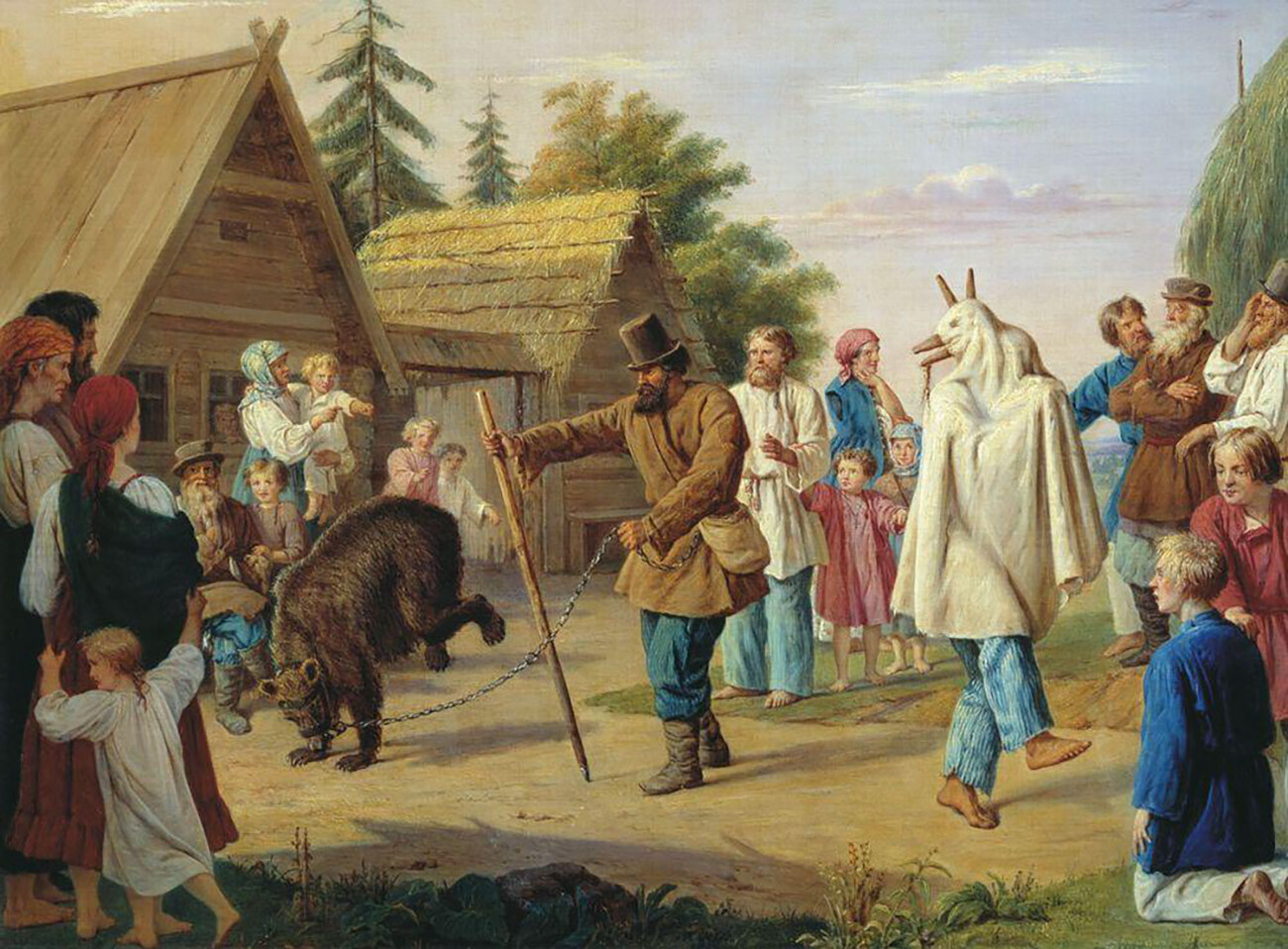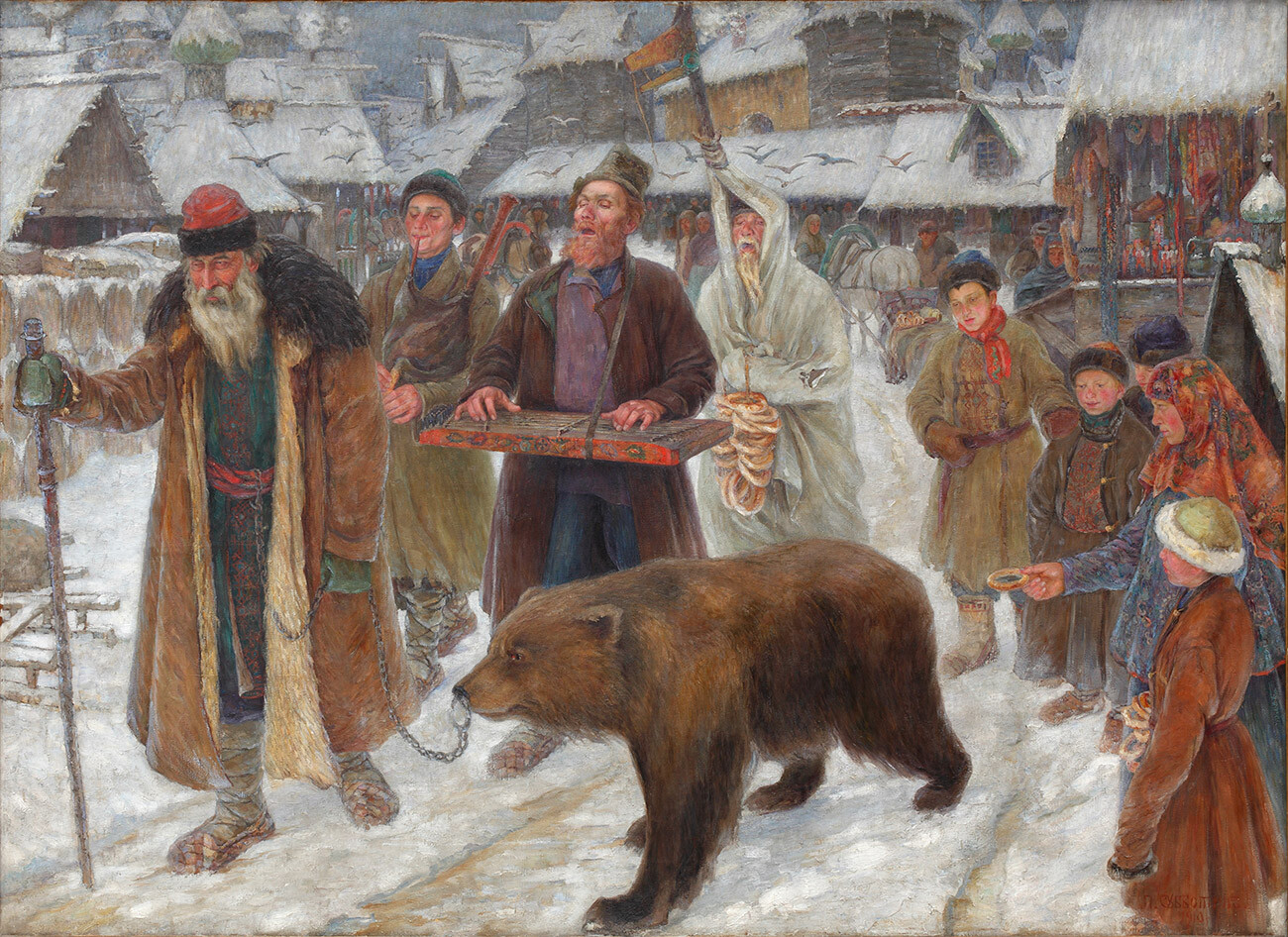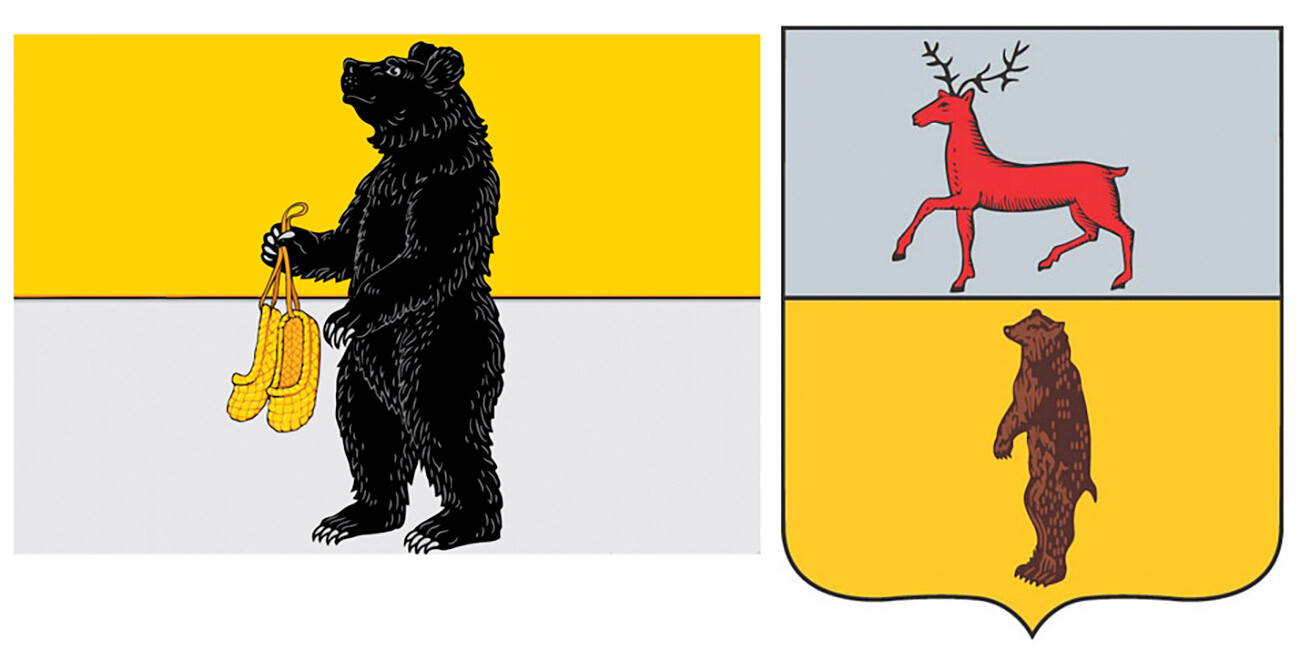
In his novel 'On the Hills' about everyday life in settlements on the Volga River in Nizhny Novgorod Governorate, Pavel Melnikov-Pechersky writes about a trade which had existed in Sergach District since the 16th century. At least 30 villages earned their living training bears. They taught bear cubs various tricks and took them around fairs. According to legend, the amazing performing bears entertained guests at the wedding of Ivan the Terrible and Marfa Sobakina.

French prisoners, who ended up in Sergach during the 1812 war, saw the trained bears with their own eyes. But, at first, they didn't believe that such a thing was possible. It all started with talk that Napoleon would soon send in fresh troops and that - as the French claimed - the Russians would not be able to prevail against them. To that, the local police chief retorted: "If needed, we can send regiments of bears." He invited the French to a parade by a special battalion.
The following is what Melnikov-Pechersky wrote about the event: "The bear handlers only roved from place to place in summer and, in winter, they were all at home. Word was sent to them from the police chief that they were to bring their bears to town by a certain date. Around a thousand animals turned up and they were placed in orderly lines and made to press a stick against their shoulder and to demonstrate how little children stole peas. And the police chief said to the French: "They are being taught rifle drills and how to crawl on the ground like hunters." The French were filled with wonder and wrote back home that they had seen a battalion of bears with their own eyes. "It seems that, from that moment on, the French began to refer to us Russians as bears."
Trained bears were real stars at fairs and various festivities. They could not only walk on their hind legs, but also reenact various "scenes". In his anthology 'Russian Folk Pictures', historian and archeographer Dmitry Rovinsky published descriptions of the bear ‘comedies’, as they were called. For instance, one of the scenes portrayed a girl smartening herself up: "The bear sits down on the ground, rubs his snout with one paw and, with the other, he gyrates a claw in front of his face – which represents a maiden looking at herself in a mirror."

Bears could perform up to 50 such skits: "They use a stick to stretch back and shoot in imitation of a bow and arrow, they steal peas like small children and crawl away on their stomach where it is dry and on their knees where wet and, having sneaked away, they lie down and loll on the ground and act out a wife cosseting her dear husband." They would then grab a hat and go round the circle of spectators asking for a small payment for their performance.

Bears from Sergach were so popular that Catherine II ordered a ‘toptygin’ (literally ‘tramper’ - a Russian name for a bear derived from the animal’s stamping gait) to be placed on the city's coat of arms. The bear trainers of Sergach themselves respectfully called their ursine charges ‘Squire Mikhailo Potapych of Sergach’.
Bear ‘comedies’ were banned in 1866, but the stories of the superbears who wowed audiences with their abilities endure to this day.
Dear readers,
Our website and social media accounts are under threat of being restricted or banned, due to the current circumstances. So, to keep up with our latest content, simply do the following:
If using any of Russia Beyond's content, partly or in full, always provide an active hyperlink to the original material.
Subscribe
to our newsletter!
Get the week's best stories straight to your inbox